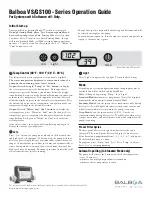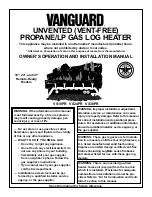
The water heater’s heating cycle
Instruction manual DR-RS
13
gis
In this water heater, the cold water enters the bottom of the it via the cold water
inlet
. The heat of combustion is transferred to the water through the
combustion chamber
. The heated tap water leaves the
heater via the hot water outlet
. Once the water heater is completely filled
with water, it remains constantly under water supply pressure. As hot water from
the water heater is consumed, it is continuously replenished with cold water.
T
he air required for combustion is forcibly delivered to the combustion chamber
by the fan. The gas required for combustion flows into the manifold via the gas
control
. The DR-RS 105 has a different gas control (see box). There are
orifices in the manifold. The gas enters the bar burners
via these orifices.
The bar burners together form the burner tray. As the gas is injected into the bar
burners, the primary air required for combustion is also drawn in from the
combustion chamber
(1)
. The ignition of the gas/air mixture takes place in two
steps. The pilot flame is first ignited by a spark igniter. This pilot flame then
ensures the complete ignition.
The flue gases generated by this combustion are led through the flue tubes
There are flue baffles
fitted inside the flue tubes. These slow down the flue
gas exhaust, improving the heat transfer efficiency. The flue gases leave the
water heater via the top box
. A different top box is used on the DR-RS 85
and 105 (see box). Below the burner tray there is an air distribution plate
,
that also serves as a radiation shield. When condensation forms, the water runs
off to the siphon via the air distribution plate.
The insulation layer
prevents heat loss. The inside of the hot water tank is
enamelled to protect against corrosion. The anodes
provide additional
protection.
2.3
The water heater’s
heating cycle
The water heater is controlled by the burner control
. The control thermostat and frost
thermostat both independently measure the water temperature (T
water
). The
water heater’s heating cycle is activated as soon as T
water
falls below the
specified threshold value (T
set
). The value for T
set
depends on the status chosen
for the water heater, see paragraph
. If the water heater is
in the ’OFF mode’ (frost protection), then this value is determined by the frost
thermostat (threshold value = 20°C). If the water heater is in the ’ON mode’, then
the threshold value is selectable via the control thermostat (40°C - 70°C).
As soon as T
water
falls below T
set
, the relevant thermostat (control or frost) will
close and the burner control will register a heat demand. The gas control
will open and the gas will mix with the air it draws in. This mixture is ignited by
the spark igniter
and the water becomes heated. A soon as T
water
exceeds
T
set
, the thermostat will open once more. The heat demand will cease and the
burner control will stop the heating cycle.
The thermostats have a certain margin both when closing and opening. We refer
to this margin as the hysteresis. The hysteresis cannot be adjusted.
2.4
Protection for the
water heater
The burner control monitors the water temperature by means of thermostats
and ensures a safe combustion. This is achieved by:
•
the
•
the
•
the
1.
The narrow opening in the orifices accelerates the gas flow. This causes a partial vacuum. The
effect of this partial vacuum is to draw the air into the flow (the Venturi effect).














































